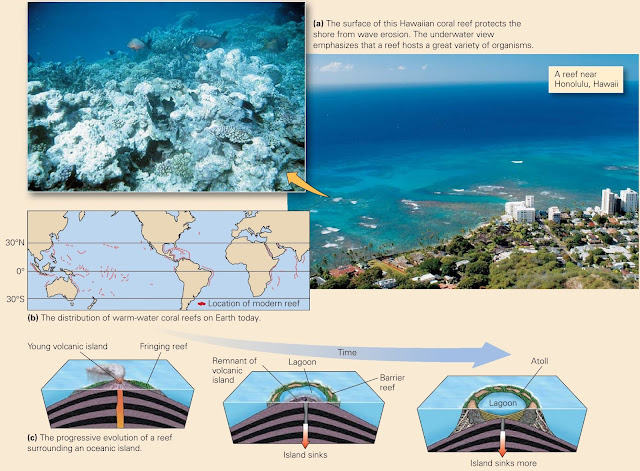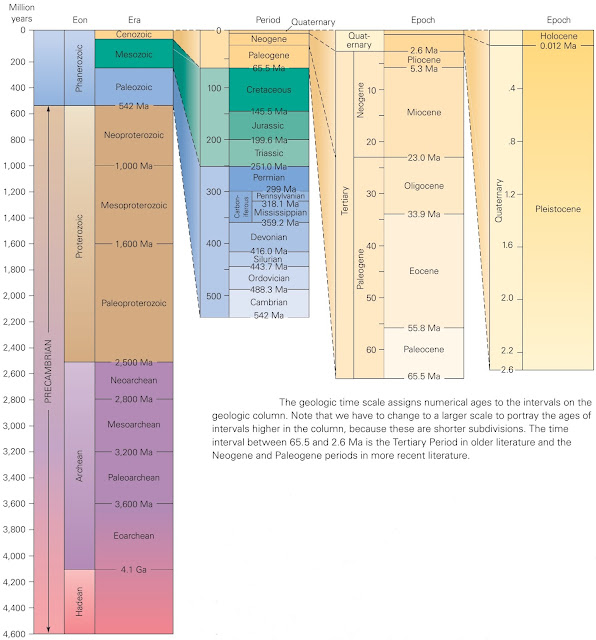Groundwater Problems
Since prehistoric times, groundwater has been an important resource that people have relied on for drinking, irrigation, and industry. Groundwater feeds the lushness of desert oases in the Sahara, the amber grain in the North American high plains, and the growing cities of sunny arid regions.
Though groundwater accounts for about 95% of the liquid freshwater on the planet, accessible groundwater cannot be replenished quickly, and this leads to shortages. Groundwater contamination is also a growing tragedy. Such pollution, caused when toxic wastes and other impurities infiltrate down to the water table, may be invisible to us but may ruin a water supply for generations to come. In this section, we’ll take a look at problems associated with the use of groundwater supplies.
Depletion of Groundwater Supplies
Is groundwater a renewable resource? In a time frame of 10,000 years, the answer is yes, for the hydrologic cycle will eventually resupply depleted reserves. But in a time frame of 100 to 1,000 years the span of a human lifetime or a civilization groundwater in many regions may be a non-renewable resource. By pumping water out of the ground at a rate faster than nature replaces it, people are effectively “mining” the groundwater supply. In fact, in portions of the desert Sunbelt region of the United States, supplies of young groundwater have already been exhausted, and deep wells now extract 10,000-year old groundwater. Some of this ancient water has been in rock so long that it has become too mineralized to be usable. A number of other problems accompany the depletion of groundwater.
 |
| Effects of human modification of the water table. |
- Lowering the water table: When we extract groundwater from wells at a rate faster than it can be resupplied by nature, the water table drops. First, a cone of depression forms locally around the well; then the water table gradually becomes lower in a broad region. As a consequence, existing wells, springs, and rivers, and swamps dry up (figure above a, b). To continue tapping into the water supply, we must drill progressively deeper. Notably, the water table can also drop when people divert surface water from the recharge area. Such a problem has developed in the Everglades of southern Florida, a huge swamp where, before the expansion of Miami and the development of agriculture, the water table lay at the ground surface (figure above c, d). Diversion of water from the Everglades’ recharge area into canals has significantly lowered the water table, causing parts of the Everglades to dry up.
- Reversing the flow direction of groundwater: The cone of depression that develops around a well creates a local slope to the water table. The resulting hydraulic gradient may be large enough to reverse the flow direction of nearby groundwater (figure below a, b). Such reversals can allow contaminants, seeping out of a septic tank, to contaminate the well.
- Saline intrusion: In coastal areas, fresh groundwater lies in a layer above saline (salty) water that entered the aquifer from the adjacent ocean (figure below c, d). Because fresh water is less dense than saline water, it floats above the saline water. If people pump water out of a well too quickly, the boundary between the saline water and the fresh groundwater rises. And if this boundary rises above the base of the well, then the well will start to yield useless saline water. Geologists refer to this phenomenon as saline intrusion.
- Pore collapse and land subsidence: When groundwater fills the pore space of a rock or sediment, it holds the grains apart, for water cannot be compressed. The extraction of water from a pore eliminates the support holding the grains apart, because the air that replaces the water can be compressed. As a result, the grains pack more closely together. Such pore collapse permanently decreases the porosity and permeability of a rock, and thus lessens its value as an aquifer (figure below e, f).
 |
| Some causes of groundwater problems. |
Pore collapse also decreases the volume of the aquifer, with the result that the ground above the aquifer sinks. Such land subsidence may cause fissures at the surface to develop and the ground to tilt. Buildings constructed over regions undergoing land subsidence may themselves tilt, or their foundations may crack. In the San Joaquin Valley of California, the land surface subsided by 9 m between 1925 and 1975, because water was removed to irrigate farm fields.
Natural Groundwater Quality
Much of the world’s groundwater is crystal clear, and pure enough to drink right out of the ground. Rocks and sediment are natural filters capable of removing suspended solids these solids get trapped in tiny pores or stick to the surfaces of clay flakes. In fact, the commercial distribution of bottled groundwater (“spring water”) has become a major business worldwide. But dissolved chemicals, and in some cases methane, may make some natural groundwater unusable. For example, groundwater that has passed through salt-containing strata may become salty and unsuitable for irrigation or drinking. Groundwater that has passed through limestone or dolomite contains dissolved calcium (Ca2 ) and magnesium (Mg2 ) ions; this water, called hard water, can be a problem because carbonate minerals precipitate from it to form “scale” that clogs pipes. Also, washing with hard water can be difficult because soap won’t develop a lather. Groundwater that has passed through iron-bearing rocks may contain dissolved iron oxide that precipitates to form rusty stains. Some groundwater contains dissolved hydrogen sulphide, which comes out of solution when the groundwater rises to the surface; hydrogen sulphide is a poisonous gas that has a rotten-egg smell. In recent years, concern has grown about arsenic, a highly toxic chemical that enters groundwater when arsenic-bearing minerals dissolve in groundwater.
Human-Caused Groundwater Contamination
 |
| Contamination plumes in groundwater. |
As we’ve noted, some contaminants in groundwater occur naturally. But in recent decades, contaminants have increasingly been introduced into aquifers because of human activity (figure above a). These contaminants include agricultural waste (pesticides, fertilizers, and animal sewage), industrial waste (dangerous organic and inorganic chemicals), effluent from “sanitary” landfills and septic tanks (including bacteria and viruses), petroleum products and other chemicals that do not dissolve in water, radioactive waste (from weapons manufacture, power plants, and hospitals), and acids leached from sulfide minerals in coal and metal mines. The cloud of contaminated groundwater that moves away from the source of contamination is called a contaminant plume (figure above b).
The best way to avoid such groundwater contamination is to prevent contaminants from entering groundwater in the first place. This can be done by placing contaminants in sealed containers or on impermeable bedrock so that they are isolated from aquifers. If such a site is not available, the storage area should be lined with plastic or with a thick layer of clay, for the clay not only acts as an aquitard, but it can bond to contaminants. Fortunately, in some cases, natural processes can clean up groundwater contamination. Chemicals may be absorbed by clay, oxygen in the water may oxidize the chemicals, and bacteria in the water may metabolize the chemicals, thereby turning them into harmless substances.
Where contaminants do make it into an aquifer, environmental engineers drill test wells to determine which way and how fast the contaminant plume is flowing; once they know the flow path, they can close wells in the path to prevent consumption of contaminated water. Engineers may attempt to clean the groundwater by drilling a series of extraction wells to pump it out of the ground. If the contaminated water does not rise fast enough, engineers drill injection wells to force clean water or steam into the ground beneath the contaminant plume (figure above c). The injected fluids then push the contaminated water up into the extraction wells.
More recently, environmental engineers have begun exploring techniques of bioremediation: injecting oxygen and nutrients into a contaminated aquifer to foster growth of bacteria that can react with and break down molecules of contaminants. Needless to say, cleaning techniques are expensive and generally only partially effective.
Unwanted Effects of Rising Water Tables
We’ve seen the negative consequences of sinking water tables, but what happens when the water table rises? Is that necessarily good? Sometimes, but not always. If the water table rises above the level of a house’s basement, water seeps through the foundation and floods the basement floor. Catastrophic damage occurs when a rising water table weakens the base of a hillslope or a failure surface underground triggers landslides and slumps.
Figures credited to Stephen Marshak.
Figures credited to Stephen Marshak.


























